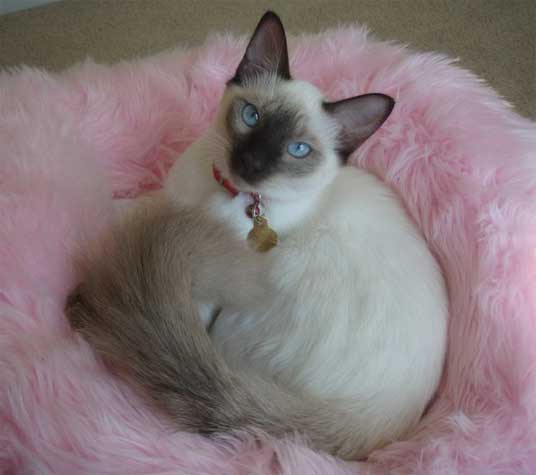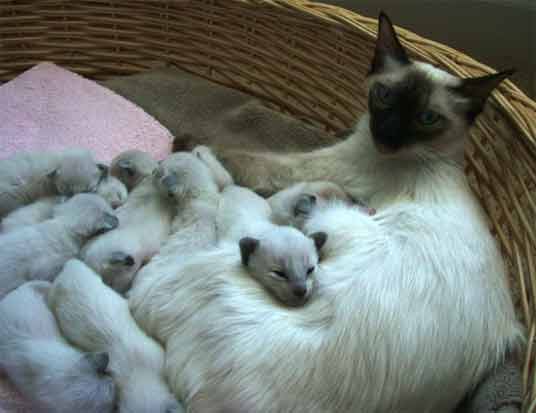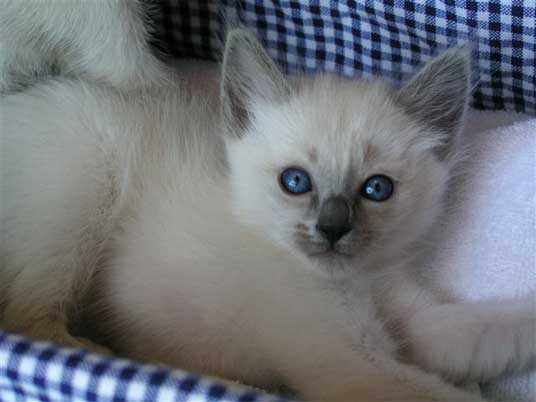Balinese
Cats
and Kittens:
Photos and Breed
Information
All photos of Balinese cats on this page are kind courtesy of
Carolina
Blues Cattery. Simply beautiful cats.
ORIGIN
Balinese are really longhaired Siamese.
Long hair is a recessive gene and appears in Siamese litters from time
to time. Balinese were first registered as Longhaired Siamese in
Britain in 1928 and were predominantly sold as pets, because they were
viewed as a peculiarity. After World War II, however, a Californian
breeder worked on the breed, and her Longhaired Siamese were shown in
1955, recognized by American cat registries in 1961, and then
in
Europe in the 1970s. The name was changed to Balinese around this time
because breeders did not want to give the name Siamese to a cat that
did not have the true Oriental look of the shorthaired cat.

The
breed gained popularity and as breeders "worked" on it, they developed
two separate types of Balinese - traditional
Balinese recognized
in North America and contemporary Balinese, recognized in Europe.
APPEARANCE
The traditional Balinese that are featured on this page have the same
'point' markings as the Siamese which can come in the four traditional
colors of seal, blue, chocolate and lilac. They resemble a Siamese, but
have a medium-length silky coat and a plumed tail, but are not as
fluffy as
Himalayan
cats. They do not have the ruff around the neck as the Himalayans do,
however, and are much sleeker. Their coats tends to darken as the cat
gets older.
Contemporary Balinese come in a wider range of
colors and also tabby patterns. They have a shorter coat and are almost
identical to
Siamese
except for the plumed tail.
The
heads of nearly all Balinese are wedge-shaped, although some owners
prefer an apple shape. The eyes of all types are vivid blue.

PERSONALITY
As
elegant as they look, Balinese are an agile, playful and
intelligent cat that like to be in the middle of whatever is going on -
they like attention and enjoy human company, but are not as vocal as
the Siamese. Balinese are also highly entertaining and benefit from
having another cat around. They enjoy sitting on laps and being
cuddled, making great companions.


